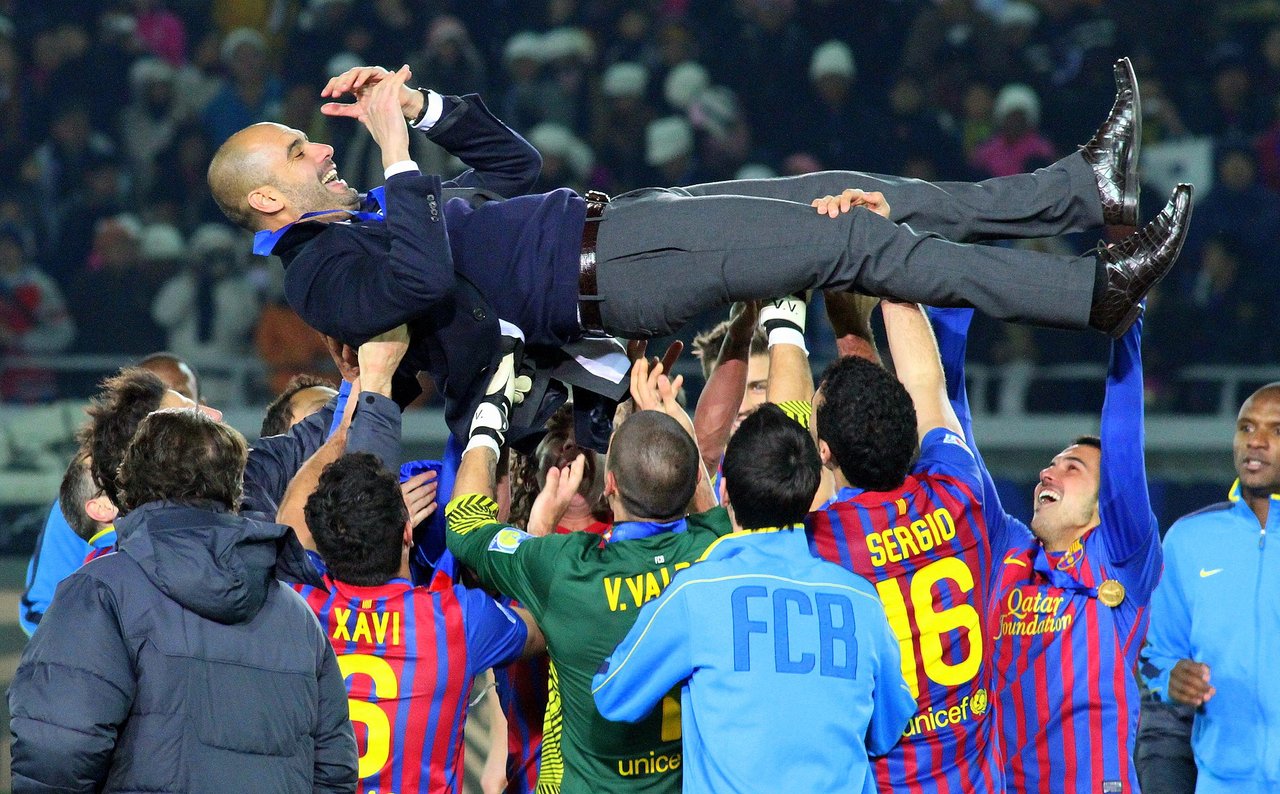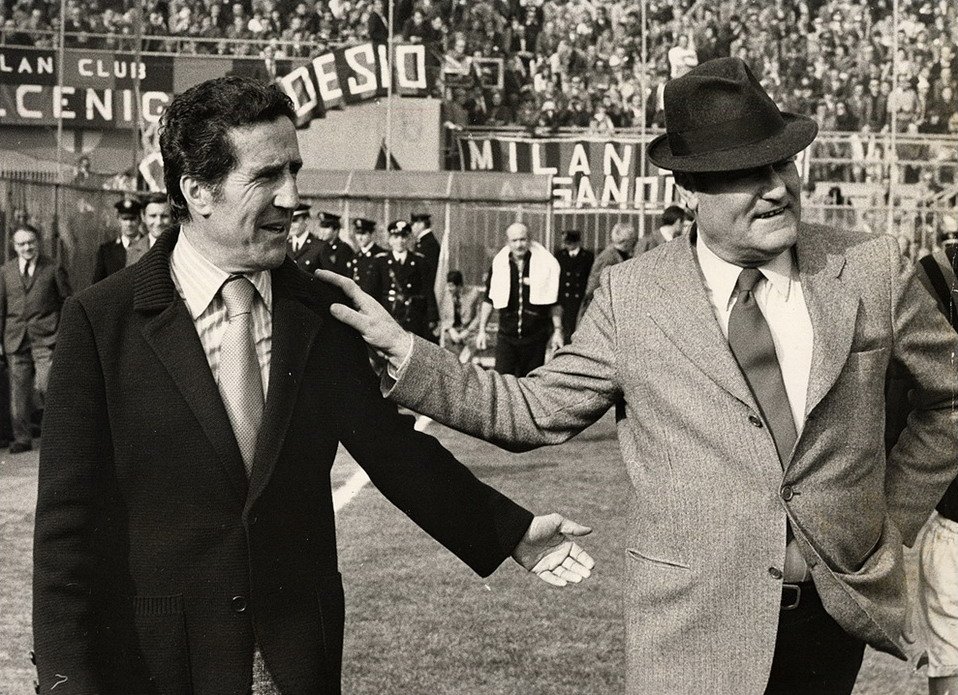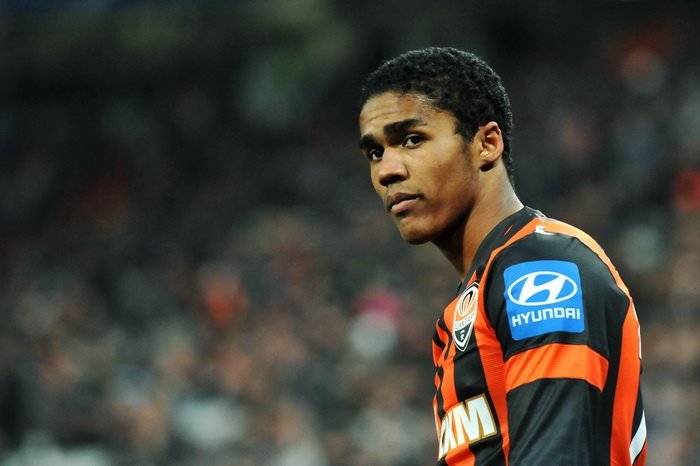
Il giocatori del Barcellona portano in trionfo il loro allenatore, Pep Guardiola (2011). Foto da Christopher Johnson, CC BY-SA 2.0, via Wikimedia Commons
DUE MODI OPPOSTI DI INTENDERE IL CALCIO |
|---|
Mi è capitato nelle ultime ore di assistere al video della litigata, avvenuta negli studi della trasmissione Sky Calcio Club, tra il conduttore e popolare telecronista, Fabio Caressa, e il giornalista e scrittore livornese, Marco Bucciantini. Oggetto del contendere tra i due, è stata la disputa su una delle questioni più antiche che gravitano all'interno del mondo del calcio: la ricerca ossessiva del possesso palla, in stile Barcellona di Guardiola, è davvero utile per costruire squadre di successo?
La netta divergenza di opinioni tra i due colleghi, con il primo piuttosto piccato nel sottolineare l'inutilità di questo particolare aspetto, e l'altro intento a rimarcare la presenza costante, in testa ai vari campionati, proprio dei seguaci del tiki-taka, si è trasformata presto in un vero e proprio battibecco dai toni aspri, tra gli sguardi imbarazzati degli altri ospiti.
Forse quanto sto per dirvi non c'entrerà nulla, e il malumore tra i due è derivato dallo "scippo" dell'ultimo tiramisu disponibile nella mensa aziendale, ma non devono essere tempi facili per le Pay-TV nel nostro Paese, tra cali di ascolti e centinaia di migliaia di disdette che ne mettono in dubbio il futuro. L'insolito nervosismo del padrone di casa lo ha portato a spingersi fino ad una fastidiosa prevaricazione, nel momento in cui si è sentito in dovere di ricordare il proprio ruolo predominante nello show, autodefinendosi in qualche modo il possessore del diritto di parola altrui.

Helenio Herrera (a sinistra) e Nereo Rocco. Immagine di pubblico dominio
Venendo al nocciolo della questione: è vero, come sostenuto da Caressa, che il dato sul possesso palla si debba considerare in fondo inutile, dato che la stessa viaggia per la maggior parte del tempo tra un piede ed un altro, trovandosi formalmente nella disponibilità di nessuno, oppure questa particolare statistica risulta bene o male in grado di dare ragione a chi, alla fine della gara, può contare sul dato più alto?
A parte l'azzeccato tweet di Paolo Ziliani (evidentemente una volta su mille, anche per caso, tutti sono in grado di indovinarla), che giustamente ha ricordato come, secondo i criteri di Caressa, anche il denaro prelevato dallo sportello di un bancomat dovrebbe essere considerato di nessuno, e quindi liberamente afferrabile, nei secondi intercorsi tra la sua emissione e il contatto con le dita del prelevante, la questione appare difficile da liquidare in maniera assolutistica.
Tradotto in parole povere, la disputa suona più o meno così: gioco all'italiana o tiki taka di ispirazione spagnola? Meglio seguire i dettami tattici introdotti in Italia da allenatori come Helenio Herrera e Nereo Rocco negli anni '60 e '70 (ripresi ed evoluti nel tempo dai vari Trapattoni ed Allegri), secondo i quali tutto deve partire da una difesa bloccata e dall'azione di rimessa, o affidarsi al continuo movimento del pallone, in un possesso della sfera sfiancante, volto alla ricerca del passaggio che metta davanti alla porta gli attaccanti?
Personalmente non avrei dubbi nello scegliere la seconda ipotesi, capace di far divertire di più non solo gli spettatori neutrali, ma anche e soprattutto i propri sostenitori. Quando la palla è tra i tuoi piedi, significa non concederla all'avversario, e di conseguenza moltiplicare le chances di trovare la via del goal, riducendo i rischi. Tuttavia, l'assolutismo in materia potrebbe risultare piuttosto fuori luogo, soprattutto se non contestualizzato al materiale umano a disposizione.

Il brasiliano Douglas Costa, con la maglia dello Shaktar nel 2012. Foto da Football.ua, CC BY-SA 3.0 GFDL, attraverso Wikimedia Commons
Inutile, ad esempio, fossilizzarsi sul catenaccio, lancio lungo e contropiede, quando si ha a disposizione una rosa di palleggiatori come Iniesta o Andrea Pirlo; allo stesso modo, fossilizzarsi sulle triangolazioni con una linea composta da tanti contropiedisti, in stile Douglas Costa o Gareth Bale non porterebbe a grandi risultati.
L'unico "pericolo" per un allenatore probabilmente, non è tanto quello di riconoscersi di più in un modulo o nell'altro, ma di non saper trovare alternative al proprio credo calcistico, quando l'occasione lo richiede. Alcune squadre saranno sempre a proprio agio giocando la palla lunga agli scattisti, altre si sentiranno male senza proporre almeno venti passaggi prima di arrivare ad un tiro in porta, ma in determinate occasioni l'abilità di chi guida da fuori deve riuscire a leggere le mutate condizioni di una partita.
Scendere in campo per imporre la propria filosofia di gioco è il sogno di ogni titolare della panchina, ma realisticamente parlando, ciò è di solito possibile un numero di volte direttamente proporzionale alla qualità tecnica dei calciatori a disposizione. E talvolta, anche quando lo sarebbe, diventa controproducente di fronte a determinate tipologie di avversario.
Allenare una presunta "grande", spedendola in campo con la difesa bassa persino contro le squadre provinciali, può solo regalare un'inaspettata fiducia agli avversari, così come affrontare contropiedisti micidiali buttandosi scriteriatamente in avanti, aumenta a dismisura le possibilità di lasciarci le penne. Non è tanto il modulo a fare la differenza, ma l'intelligenza di chi deve comprenderne i limiti.
Statemi bene, alla prossima!
 ENGLISH VERSION
ENGLISH VERSION
Translated with DeepL.com
TWO OPPOSITE WAYS OF UNDERSTANDING FOOTBALL |
|---|
I happened in the last few hours to witness the video of the altercation, which took place in the studios of the Sky Calcio Club programme, between the presenter and popular commentator, Fabio Caressa, and the Livorno-based journalist and writer, Marco Bucciantini. The object of contention between the two, was the dispute over one of the oldest questions that gravitate around the world of football: is the obsessive pursuit of ball possession, in the style of **Guardiola's Barcelona, really useful for building successful teams?
The sharp difference of opinion between the two colleagues, with the one rather sharply emphasising the uselessness of this particular aspect, and the other pointing out the constant presence of the followers of the tiki-taka at the head of the various leagues, soon turned into a real squabble in bitter tones, amidst the embarrassed looks of the other guests.
Perhaps what I'm about to tell you has nothing to do with it, and the discontent between the two of them stemmed from the 'snatching' of the last tiramisu available in the company canteen, but these must not be easy times for pay-TV in our country, with declining ratings and hundreds of thousands of cancellations casting doubt on their future. The host's unusual nervousness led him to push himself to the point of annoying prevarication, when he felt obliged to remind himself of his own predominant role in the show, somehow defining himself as the possessor of other people's right to speak.

Helenio Herrera (left) and Nereo Rocco. Public domain image
Coming to the crux of the matter: is it true, as claimed by Caressa, that the ball possession figure should be considered basically useless, since the ball travels most of the time between one foot and another, being formally available to no one, or does this particular statistic prove to be right for whoever, at the end of the match, can count on the highest figure?
Apart from the apt tweet by Paolo Ziliani (evidently once in a thousand, even by chance, everyone is able to guess it), who rightly recalled how, according to the criteria of Caressa, even money withdrawn from an ATM machine should be considered to belong to no one, and therefore freely graspable, in the seconds between its issue and contact with the withdrawer's fingers, the question appears difficult to settle in an absolutist manner.
Put simply, the dispute goes something like this: Italian-style play or Spanish-inspired tiki taka? Is it better to follow the tactical dictates introduced in Italy by coaches such as Helenio Herrera and Nereo Rocco in the 60s and 70s (taken up and evolved over time by the various Trapattoni and Allegri), according to which everything must start from a blocked defence and a throw-in, or to rely on the continuous movement of the ball, in a tiring possession of the ball, aimed at finding the pass that puts the attackers in front of the goal?
Personally, I would have no doubts in choosing the second hypothesis, capable of entertaining more not only the neutral spectators, but also and above all their own supporters. When the ball is between your feet, it means not conceding it to the opponent, and consequently multiplying the chances of finding the path to goal, reducing the risks. However, absolutism in this matter could be rather misplaced, especially if not contextualised with the human material at hand.

Brazil's Douglas Costa, wearing a Shaktar shirt in 2012. Photo by Football.ua, CC BY-SA 3.0 GFDL, via Wikimedia Commons
It is useless, for example, to fossilise on the catenaccio, long throw and counter-attack, when you have at your disposal a squad of dribblers like Iniesta or Andrea Pirlo; similarly, fossilising on triangulations with a line composed of many counter-attackers, in the style of Douglas Costa or Gareth Bale would not bring great results.
The only 'danger' for a coach is probably not so much that he recognises himself more in one form or the other, but that he does not know how to find alternatives to his footballing credo when the occasion calls for it. Some teams will always be comfortable playing the long ball to the strikers, others will feel bad without proposing at least twenty passes before getting a shot on goal, but on certain occasions the skill of the leader from the outside must be able to read the changing conditions of a game.
To take the field to impose one's own philosophy of play is the dream of every bench starter, but realistically speaking, this is usually possible a number of times directly proportional to the technical quality of the players available. And sometimes, even when it would be, it becomes counterproductive when faced with certain types of opponents.
Coaching a supposedly 'great' team and sending them out with a low defence even against provincial teams can only give opponents unexpected confidence, just as tackling deadly counter-attackers by rushing forward increases the chances of getting killed disproportionately. It is not so much the module that makes the difference, but the intelligence of those who must understand its limits.
Stay safe, see you next time!


